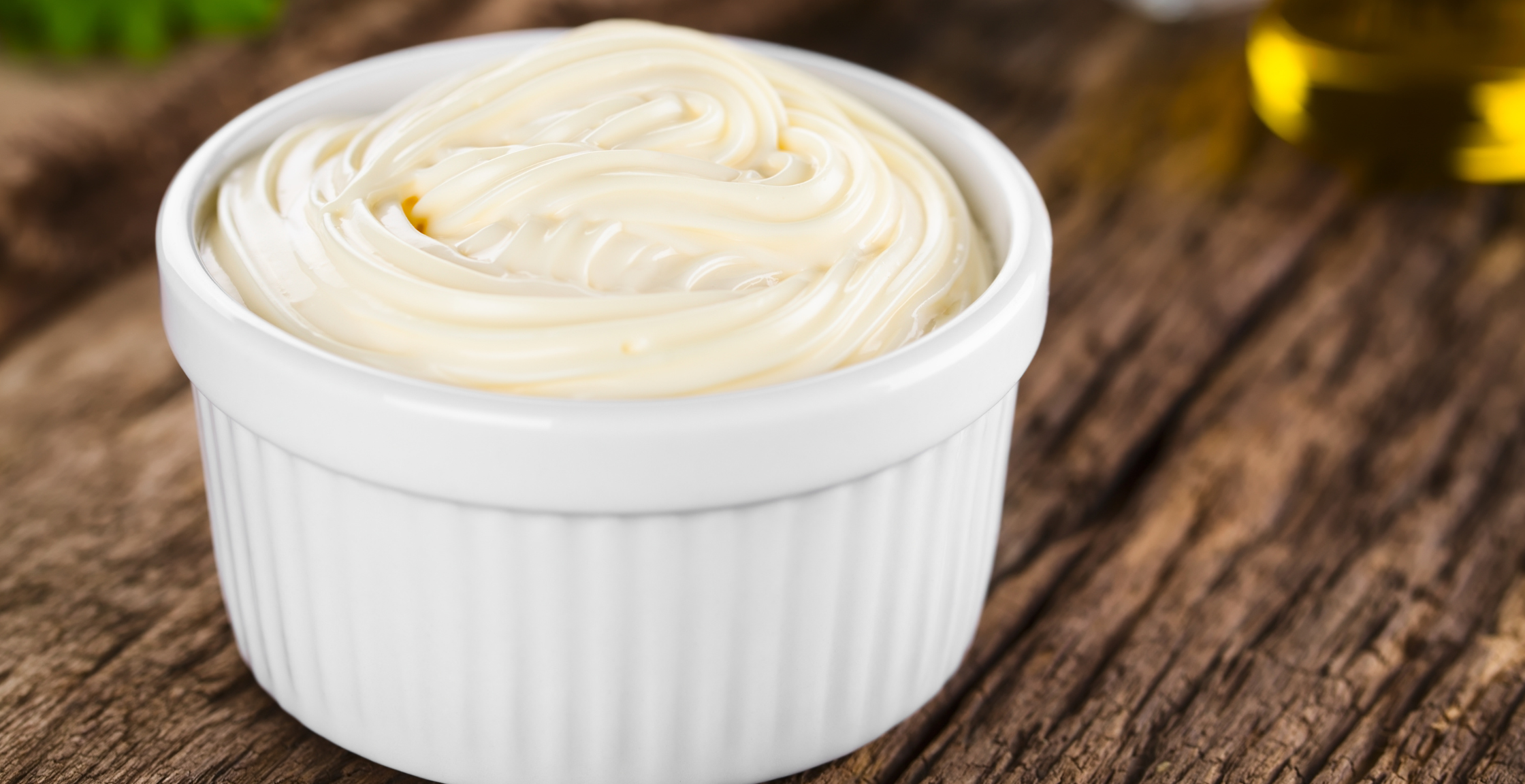
| 5 | 10 | 131 |
| Ingredients | Minutes | Calories |
| Prep | Cook | Servings |
| 10 min | 0 min | 8 |

| 1 large egg | Egg yolk |
| 1 tbsp | Lemon juice (freshly squeezed) |
| 1 tsp | Dijon mustard |
| 1/2 tsp | Salt |
| 1/2 cup | Vegetable oil |
1. In a medium-sized bowl, whisk together egg yolk, lemon juice, mustard, and salt until well combined.
2. While whisking continuously, slowly pour in the vegetable oil. The mixture will start to thicken as you whisk.
3. Continue whisking and pouring in the oil until all of the oil is incorporated and the mixture is thick and creamy.
4. Taste and adjust the seasoning to your liking. Add more salt or lemon juice as needed.
5. Transfer your homemade mayonnaise to a jar or container and store it in the refrigerator until ready to use. Enjoy on sandwiches, burgers, or as a dip for vegetables.
Note: It's important to use fresh ingredients and equipment that is free from any moisture or oil residue as this can affect the success of the emulsification process. Additionally, it's important to note the risks associated with consuming raw eggs, so make sure to use pasteurized eggs to minimize any health risks.
Homemade mayonnaise can be stored in the fridge for up to one week. To store your mayonnaise, transfer it to an airtight container and keep it in the refrigerator. Be sure to label the container with the date it was made to keep track of how long it has been stored. Also, make sure to use clean utensils every time you dip into the jar to prevent cross-contamination.
Mayonnaise is made through the process of emulsification, which is when two liquids that normally do not mix together are combined and held together in a stable mixture. In the case of mayonnaise, oil and vinegar (or another acidic liquid) are used. The egg yolk acts as a stabilizer to bring the two liquids together and keep them from separating.